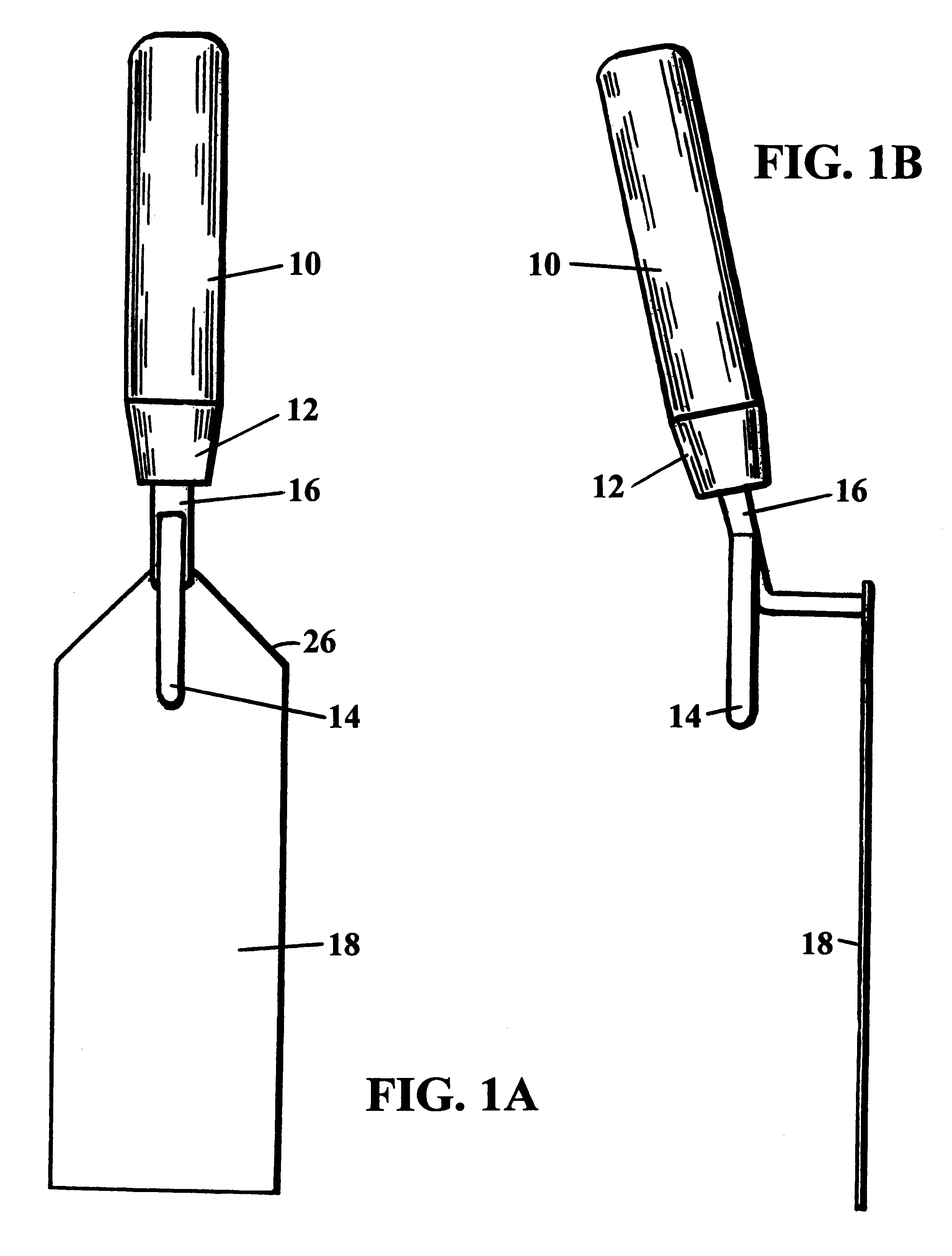Margin trowel with bucket hook
a technology a margin trowel, which is applied in the direction of manufacturing tools, carpet cleaners, and ways, can solve the problems of a bucket hook falling into the bucket, the handle at least being partially covered, and the trowel usually getting in the way, etc., and achieves no significant advancement in the field of margin trowels for decades
- Summary
- Abstract
- Description
- Claims
- Application Information
AI Technical Summary
Benefits of technology
Problems solved by technology
Method used
Image
Examples
Embodiment Construction
.
The present invention provides a time-saving troweling tool for scooping masonry products, such as thinset, grout, and other setting materials out of a five-gallon bucket, or other similar container. It has a large blade, an elongated bucket hook positioned substantially parallel to the blade, and an angled stem between the handle and the blade, the enlarged blade allowing more masonry product to be scooped from the bucket at one time, the enlarged blade also becoming a counterweight for the handle to maintain the troweling tool in a securely suspended position on the lip of a bucket without being susceptible to being easily knocked out of the bucket or easily falling into the bucket during transport, when the bucket is bumped, or when the bucket is slid across a floor, and its handle will remain free of masonry product. Positioning of the troweling tool on the bucket lip also permits excess masonry product which remains clinging to the trowel after use to be easily and neatly retu...
PUM
 Login to View More
Login to View More Abstract
Description
Claims
Application Information
 Login to View More
Login to View More - R&D
- Intellectual Property
- Life Sciences
- Materials
- Tech Scout
- Unparalleled Data Quality
- Higher Quality Content
- 60% Fewer Hallucinations
Browse by: Latest US Patents, China's latest patents, Technical Efficacy Thesaurus, Application Domain, Technology Topic, Popular Technical Reports.
© 2025 PatSnap. All rights reserved.Legal|Privacy policy|Modern Slavery Act Transparency Statement|Sitemap|About US| Contact US: help@patsnap.com



